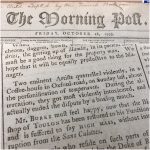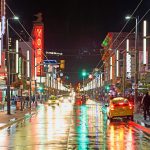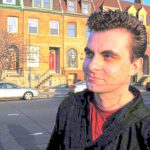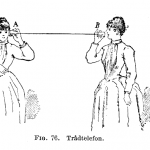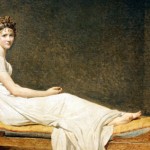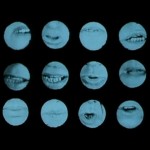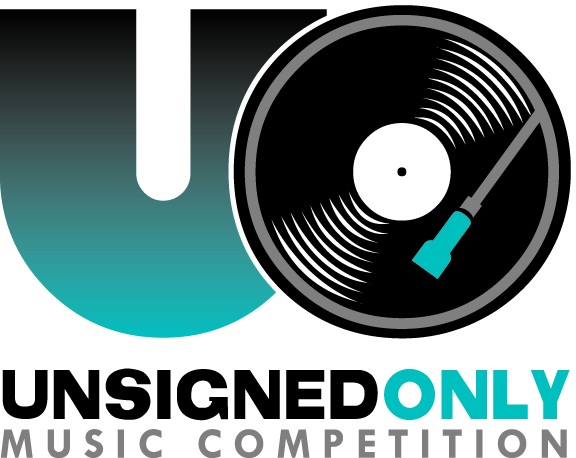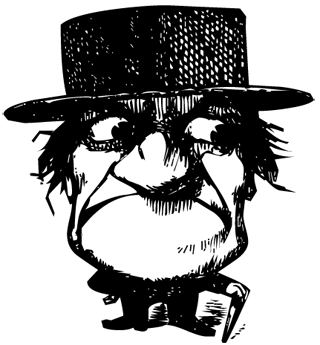
Interview with Agam Andreas
Artists, Interviews, UncategorizedAgam Andreas (also known as Andreas Maria Jacobs) is a hard act to follow. Born in Netherlands in 1956 he’s still an example of relentless artist in a constant search. He’s an editor one of the oldest art e-zines Nictoglobe and it’s a wonderful example of his artistic aspirations. It opens up the new.
His multidisciplinary work goes way beyond the boundaries of any artistic form and sometimes passes through even further to the unknown. And he’s doing it with such ease that it can inspire anyone to “try and fail and try again and fail better”. As you will discover in this interview – he is an artist of certain method, he trains himself to produce such powerful works.
***
VB: Can you describe – step by step – your more or less ordinary working session?
AA: I do not have an ordinary working session, all creative efforts are different and are completely separated. So when working on something whether a written piece or a digital work, I mostly start with an idea or a subject and then I will browse through my archive of past works and try to reuse and reform previously makes. I will make several rough sketches and then try to reduce it to leave out all unnecessarities according to a simple principle: is it raising questions which the work does nor resolve? Are the questions raised when watching or reading them interesting enough to leave them as questions to be solved by the spectator? And if so are the questions interesting enough to be raised at all? When there is a specific balance between these I will conclude the work by giving it a title which fits the subject or state the work represents.
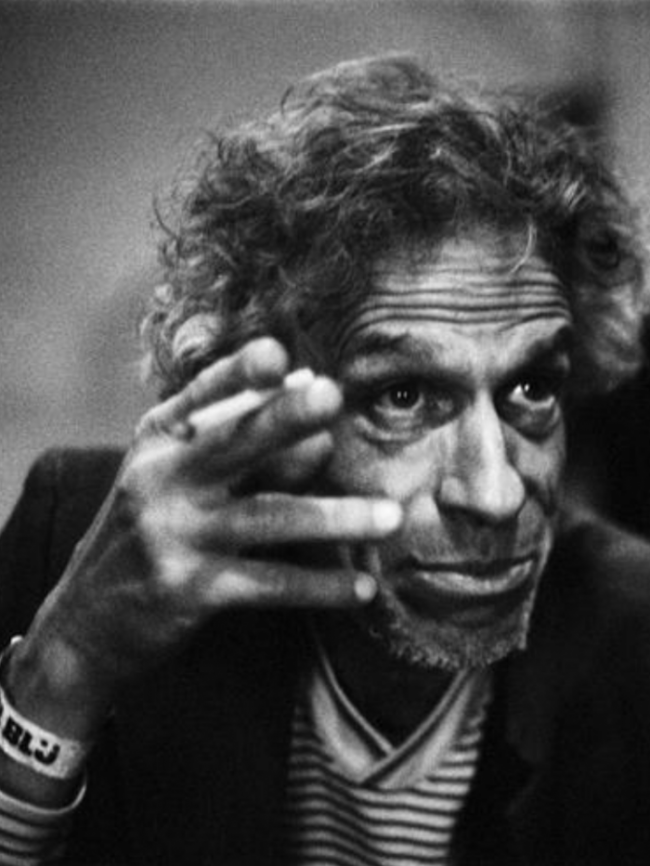
VB: What happens inside your head during that time? Is it a warzone or is it silent place?
AA: It can be that some works are fired by internal rage and agony whereas others are intentional and cerebrally constructed. For instance I can get very upset about certain current and historical events and then my outrage urges me to express this rage in a certain image or (not so often) written piece. So my head is full of connections and references towards the underlying state I am in and then I try to adjust both the work and my thoughts to work in tandem . When working from a plan I merely lay out the steps needed to evolve the concept and fill it in, for instance I worked on a piece of letter forms derived from a sentence written a long time ago and then I do not have feelings towards it at all. Just filling in the blanks.
VB: How much time passes since the inception of the piece and the moment you decide it is finished?
AA: Some works are never finished and are still be worked on even after years, others are done and final from the inception. I made some photos years ago from some drawings on cigarette cellophane which I place in a transparent plastic box and photographed it, when I saw these images again a couple of weeks ago I decided to use some of them in a repeating moving sequence as a separate work. These happens a lot, I think most of my work is a constantly reopeating, reusing, resampling of previous stages.
VB: Have you ever experienced a fit of perfectionism that actually ruined a piece and turned it into insufferable torture?
AA: Lots of time! It is the most frightful thing happening, especially when you invest some money to obtain a ‘final’ result and then you realize that you are fooled by the wrong assumptions about it. And are left with a failing , desolate and alienating state of mind. Discontent with the fact that the final result does not reflect the urge needed to make it.
***
VB: Can you tell me about your turning point as an artist – the point when you decided that you know what you do – and you know what you want to achieve?
AA: Mostly I know what I am doing but more often I am figuring out what to achieve as part of the process itself. Living in a senseless world constantly drives me to define my own sense in being part of it. Apart from the expression I feel the need to make a piece according to some intrinsic harmony which is slowly coming through like rhyme and rhythm as driving forces. Visually I tend to abstract my worldly surroundings, whereas literally I think undermining the logical meaning and order of words and sentences are necessary to be freed from a certain kind of semio-political regime as the final battle is not the agony of the ‘homer sacer’ but a battle between the symbolic truth of the world and her denial by forces who subordinate the vital impulse of life to an one-sided encrypted semio-political regime.
VB: have you ever experienced an opposite – something like burning out and feeling that you need to reinvent yourself?
AA: I am still inventing myself day by day. Sometimes I feel like I am an absolute beginner and sometimes I can see that I did made some progress. The authentic act of making is art in itself while experiencing it is a mere longing for it. So one will burn out when there is no joy in the making and when only the result matters.

VB: Also – what are the main obstacles in artists way in our time? how do you deal with problems that occur in your work? I’m talking about the moments when the thing refuses to work well and falls apart.
AA: It is an ongoing struggle to destroy and to create, sometimes public aknowledgement like praise or getting exposed or published is a negative impulse, because I always think I should have done it differently, but then the work is already in the open and in a fixed form and the bonding between the process and the result is gone. The problematic relation between subject and object results in a loss of connection between the momentuos and the endurancies, that is why I see my works mostly as efforts to try to stop the passing of time and failures or ruptures constantly interrupts the flowing of events.
***
VB: Tell me about your reading habits. Do you take notes?
AA: Yes , I regularly take notes on what I read or see or experienced, and use it a source of inspiration in later work. Notes can be written or images or sound recordings. I used to do a radioshow for a couple of years with a pirate radiostation in Amsterdam and liked to broadcast noise and trance and otherwise deconstructional utterances as a way to achieve a deeper understanding of what appears to be a superficial momentary tickling of the senses.
VB: What do you think about binge-reading?
AA: I did it when I was young ? I read almost all existing SF stories from Bradbury, Philip K Dick, AE Vogt and Asimov among others but also Baudelaire, Flaubert, Dostojevsky, Zola, Celine and Ernst Junger, currently I am more picky in what to read, also I read a lot more non-fiction like essays and/or philosophical / political related stuff and poetry from Rilke, Paul Celan, Georg Trakl and from the dutch poet Lucebert.
VB: Have you ever experienced a readers burnout?
AA: Yes maybe the last couple of years I do not read as much as I did but I am still finding some unknown writers to me like the experimental writer Velimir Chlebnikov and from the lettrist movement Isodore Isou who is greatly influential also in my works, especially when the visual and the written word combine to a new form as shown in my interest in asemic writings.
***

VB: Can you tell me about your gear? Is there any hardware\software of choice?
AA: I mainly use some photo camera’s like a Nikon 1 , iPad and iPhone and an old slow macMini. Sometimes I long for non technological tools like for instance in my Cigarette Girls project where I used TypeEx and pencil to just draw on the cellophane, but later photographed the results on a aluminium background, and arranged all of them in a kind of procession. So these succession of works in different media following each other, are constantly changing the overal outcome. The finishing of a project is endlessly delayed, given rise to the concept of process as the main result. Likewise I rework constantly older works, juxtaposing them in order to gain an insight in my own intentions as an artist.
As for software I write a lot of php scripting to maintain my own designed CMS for Nictoglobe Online Magazine, you have probably heard of and use standard imaging softs like photoshop and the like. Also I like postscript as a very special language I will do more with in the future. This magazine is a long running project started in 1985 as a hand distributed stenciled kind of pamphlet, which after the internet rose to its current prominence found a position among the multitude of likewise initiatives. Its editorial content foccuses mainly on what is going on at the margins of several art practices, whether pure avant-garde writing or more political charged expression forms. Currently the magazine is a huge collection of incoherently connected artistic utterances, partly by me and partly by others divided in a couple of broad categories.
VB: Is there any specific way you do the studies for the projects? How many stages piece can pass before it can be considered as finished?
AA: To conceive a project which started as a rough idea I start with collecting images and text who in my perception are related to the idea and by examining them thoughtfully I decide which ones will survive and are promoted to the following stage of considering and artistically judging. In the course of time many fail to pass and even sometimes the whole project is abandoned and started afresh. This painstaking process more often then not is paralyzing and devastating. For me the finishing part is hardly ever reached. Last year I finally decided to fix some drawings in a fancy frame to have them in a small exposition in the neighborhood where I live in Aamsterdam but the frames arrived too late and so the exhibition went without them.
The whole point of a teleological purpose regarding creating art is not something I do not believe in, for me the act of art lies more in a kind of awareness of the reality we are all living in, and the need to question our perceptions about that same reality, the questioning is more important than the answering as ‘we’ as human beings are constantly in a problematic discourse with ourselves and others and our position in our socially conceived surroundings. This discourse is fed by our sensorial apparatus, our senses and our intellectual capacities and capabilities as outputs from an experential transformational process. A process that will have differnt outcomes according to whom is taking part of it. The schizoid situation of modern life with its war torn world full of conflicts a single person can hardly grasp at all , culminates for me personally in an oeuvre that tries to understand what the world imposes on me as a sentient being. This imposition never stops so I always find moments urging me to express.
VB: Have you ever done any remakes or updates of your previous work?
AA: I had that long running project “Gerausche aus der Helle”, roughly translating to “Sounds from the Lights”, which had its premiere during an alternative theatre festival in Amsterdam 1992. In it I used halogen lights bulbs attached to poles in transparent columns arranged in a kind of semi-mystical patron resembling Kabala schemas. Dancers activated fragments of a sampled sound composition by crossing the rays. Afterwards I re-enacted this piece several times, among which a planned but never realized performance in Jerusalem, Israel. The re-enacments were loosely based on the availability of the technical attributes left from the previous performance. Currently the attributes are stored somewhere in Germany waiting to come to life again. The whole adventure had a timespan from 1992 until 2005 , in which three actual performances took place.
Another long lasting project is “Semantic Disturbances” conceived in 2005 and augmented and build upon until now, with spin-off projects like “Burgerwaanzin.nl” also named “La Resocialista International” a situationistic e-poetry project disguised ad a website which gained its place in the e-lit canon and “11 Ways to escape the symbolic Field”, 2012, a collection of net based works using the same concept as Semantic Disturbances. Burgerwaanzin.lk is still life and updated irregulary.

***
VB: Isn’t that funny – to talk about such intimate thing as creative act? “Dancing about architecture”-quote brought an idea that it’s more like talking about something that is not exactly a thing but it is but you can’t actually dig it that way. What do you think about it?
AA: When you mean talking about creativity is like dancing about architecture, i agree wholeheartedly. Talking about talking about … is must the same. That makes these questions so complicated to answer. Mostly I tend to counter a question with another question, but honestly there is not so much to say about creativity which is not a biased and very personal opinion. That is why it is really “intimate”. and ‘not done’ in certain social or intellectual circles. Nevertheless I think you got a glimpse of my “personal” attitude previously.
VB: What do you think about overall practice of giving an interviews? Is it important for you? What do you want to achieve by it? Is there a need to express your ideas that way? a way to express your artist statements?
AA: Interviews are instrumental to expose the persona of the artist / writer in an information hungry world and because of that I value it accordingly.
There were times when the information flow from the artist to the public was conducted via the artistic production itself , directed and steered by an well defined mechanisme as publishers, museums and galleries, which prepared the markets and the reception and the artist was a mere explanatory device in propagating the work, currently because of the enormous impact the internet has on all levels of society, the artist self is the artistic agent and almost the product.
Thus the self-exposure is part and parcel of it, without it the work will almost certainly fall in oblivion, moments after it is created.
So to keep the works alive this self prostitution is hardly avoidable.
To express artistic needs or statements it is a vehicle to propagate them as well, but depending on the particularities of specific media forms it can be counterproductive.
A friend of mine , a journalist is very conscious about this and told me that in f.i. television talkshows it is hardly possible to express some kind of intelligence because of the fear of losing a broad public.
That is when the consumption pattern of so called art is tightly coupled to the attention economics of the bigger media industries, I guess the same goes for the bigger publishing houses. Once you are in you are at another side.
Personally I prefer operating in the margins of artistic production as a secure way not to be abused, artistically or commercially, and – knowing my position as an artist is of no interest to a wider audience- I fully profit from a very slow and individual progression of my artistic quest.

VB: Or you just want to construct another kind of conversation – a trickier – which would be considered as a standalone piece of art – something like constrained writing?
AA: Indeed, you can construct for instance this interview as a kind of relational aesthetic to use an outdated artsy term, or constrained writing if you prefer , but then it should be presented as such, which is currently not the case.
I see this interview as an interview in which the interviewer asks questions about a specific subject according to his/her insights to the interviewed , who answers them in a more or less sincere way, and not as a play which outcome is unsure as neither the reader nor the interviewer/interviewed is beforehand prepared for it. When , and only when , we agree upon that setup it can be a play or even a piece of art.
VB: Can you tell me more about your history of publishing endeavors? When you have realized that you need to do that? What was the point of entry of you?
AA: When I was a student we made a stenciled pamphlet we distributed exclusively on the nightbuses in Amsterdam, it was meant to be read in the night and handled political issues such as squatting, the occupation of the Art academy and such but also some experimental poetry , a kind of derivative from the spirit of 1968. But this was in the early seventies and much of the original ideas were already gone, so it lasted not very long.
The need to influence a greater public on the political level, to agitate and propagate a societal awareness as a pamphlet in the leftish way en vogue during that period did not brought the necessary personal satisfaction lacking as it does the necessary intimacy art can provide.
Before the internet was looming we did a couple of preliminary community based experiments on the then current electronic communication systems : Bulletin Board Systems , BBS.
There were a lot of them in that time among which one we hooked up with, it was from the Amsterdam illegal radio scene affiliated DFM , called LetterBoard which did some poetry as well and I took part in it with Nictoglobe’s LuftPost.
Afterwards I got a VideoText module hooked up to a then current MSX computer to create the first fully electronic Nictoglobe publication.
When the internet gained momentum in the early 90ties I founded Nictoglobe Online Magazine, which is still current and accepts submissions of various fields.

VB: Is editing for you a balancing act? Some editors trust the authors and their m.o. and some like to assist them to improve their works. Have you developed your own way of dealing with authors? Can you describe it?
AA: It varies mostly I do the layout, typography and style, but sometimes I need to correct the content as well , which I do not like I want to concentrate on the distribution of the articles and artworks and not improving the language skills of the contributors, so i developed a certain kind of authoritarian attitude to potential contributors and prefer a contribution to be a finished product so freeing me from adjustments.
Also I do not want to influence the artistic pretense – if any – that means either I like it judging from my very specific personal interests and tastes or I reject a contribution as not appropriate.
When necessary I will write a short notice of rejection explaining why it does not fit or – and that is because of my inherited lazyness – I neglect and forget about it.
So maybe there are a lot of disappointed would be contributors who never heard back from me. It – the Nictoglobe – is a – and I am repeating myself – very personal endeavor.
VB: What are your differences between experiences as an artist and as an editor?
AA: As an editor following broader more specific fields of interest which can combine different and even contradicting point of views gives way to a more or less coherent editorial content policy of which hopefully reflects to the reader/contributor.
Whereas as an artist I see the project as a diverse collection of essays, artworks which reflects back to me personally.
So the distinctions be the two are blurred and intertwined on different levels, on the personal level I expose my own artworks and writings, and the reception thereof gives rise to a reaction whether as an artwork or piece of poetry which in turn is again exposed in the same medium.
On the public level it is open to anyone who thinks along some not so outspoken cultural attitudes or stylistic preferences, among which a certain cultural political radicalism is shared.
Language is what unites and divides, the need to look for unknown territories urges me to experiment with its boundaries. So this whole publishing project is an open form in which I try to navigate towards these unknown territories.
VB: What do you think about writing machines and image generators? Is it useful for you?
In general – what fo you think about mechanical creativity?
AA: Personally I like computer generated text and images less than I did previously when I did several works based on applying search algorithms on specific word entries. As it turns out to be the produced texts reads as a new narrative which is not fixed to a preconfigured structure.
The randomness gives it another outcome each time the program is run, producing a quasi unique storyline.
The quasi uniqueness is what bothers me , there is a need in me to control the outcome more then the algorhithm is giving. Currently I tend to like a fixed outcome more and more and I am investigating the permutations of text and image fragments on detail niveau . These fragments can be artificially generated but mostly are hand picked from digitally produced originals.
Artificially created texts and images may augment our own awareness and knowledge regarding the ‘meaning’ of human various ways of communicating not the least in our understanding of our own self images. When a narrative produced by a machine is indistinguishable from a human-made narrative it says something about the intrinsic properties of the construct itself and by experimenting with it we may progress towards newer forms of expression.
Expressions we can benefit from in various fields, for instance cinema progressed from a simple projection system accompanying traditional story telling towards a high tech industry capable of influencing great masses, even so artificially produced images and text such as augmented reality, Virtual reality 3d printing etc etc will at its turn make available new ways to influence and shape society.

***






